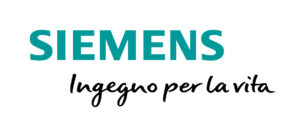ANALYTICAL INSTRUMENTS FOR INDUSTRIAL APPLICATIONS
1 XRF FOR PMI APPLICATIONS
Metallurgical industry uses many different metals and alloy in their production lines. To meet their customers’ requirements in terms of mechanical characteristics, corrosion resistance, temperature and pressure tolerance and to avoid metals mix-ups, the industry needs to compare their products against acceptable alloy specifications. The consequences of processing or fabricating with the wrong alloy material can be serious, resulting in product failure and eventual loss of business. Thus, testing incoming materials can be challenging for the industry when different materials are used for the same part or product, especially when there is no visible difference. In particular, high volume manufacturers need a fast, non-destructive method that offers 100% PMI (Positive Material Identification). Moreover, many industries apply coatings on their products to ensure resistance against aggressive substances, to make the surface adhesive or non-adhesive, to change the wettability of the surface or to add a new property to the material. Handheld XRF (HH-XRF) is a fast, non-destructive testing technique for measuring alloy and coatings composition, confirm alloy grades, perform PMI inspections and to check the coating thickness, providing rapid, definitive material confirmation. PMI Analyzer operators can quickly ID material mix-ups, improve material control processes, and enjoy a rapid return on investment. The Vanta™ handheld XRF analyzer series made by Olympus is a rugged PMI analyzer that can operate in hard working conditions allowing to analyze the concentrations of 25 elements in alloys in 1-2 seconds.
2 XRD FOR SLUDGE, SCALING AND CORROSION ANALYSIS
Scaling and corrosion affect equipment throughout the oil and gas supply chain, from exploration and extraction to pipelines and refineries. Knowing the composition of the scaling and corrosion products enables maintenance teams to apply the most appropriate anti-scaling treatment or corrosion additive immediately. Olympus XRD instruments only require as little as 15 mg of scaling products. Results are obtained in minutes and provide maintenance teams, engineers, and production chemists with the knowledge needed to select the most appropriate anti-scaling treatment or corrosion management strategy. Their unique sample handling system collects structural (mineralogy/phase) and cursory elemental (chemistry) information. Operators utilize this information to help identify the sample with the aid of a dedicated application database. Using XRD to understand the inorganic component of the sludge can assist the removal process and contribute to preventing reoccurrence and enabling a detailed characterization of corrosion products. The availability of portable XRD instruments as the Olympus TERRATM XRD analyzer, allow to identify the sludge and scaling phases on-site making this instrument an ideal tool for corrosion inspections.
For more information please visit: www.quantanalitica.com














